|
Home
/
Masters
/
Harry
L.
Nelson |
|
|
|
|
|
|
|
|
|
Harry Lewis Nelson is a
mathematician, computer programmer and expert, math
editor, and devoted puzzle inventor. Nelson earned his
degrees in mathematics from Harvard (1953) and the
University of Kansas (1957). For 30 years, since 1960
until 1991, he worked with supercomputers at the
Lawrence Radiation Laboratory / Lawrence Livermore
National Laboratory (LLNL) in Livermore, California.
Harry and his wife Claire live in Livermore,
California. They have four children and nine
grandchildren. |
|
|
|
|
 |
|
|
|
The 27th Mersenne Prime
found by Harry Nelson and David Slowinski. |
|
|
|
|
|
Numbers and Chess |
|
In April of 1979 Harry Nelson and
David Slowinski with their computer program found the
27th Mersenne prime, 244497
- 1. It consists of 13,395 digits (almost two times more
than the previously known, biggest Mersenne prime) and
was the largest prime number known at that time. In
early 80's Harry Nelson teamed with Robert Hyatt and
Albert Gower, and in 1983 and 1986 they won the World
Computer Chess Championship with their chess program
Cray Blitz. |
|
|
|
|
 |
Cage and Ring Puzzles. The first puzzles produced by Minimax
Game Corporation..
|
|
|
|
Math and Puzzles |
|
Harry Nelson has a longtime
interest in nice puzzles of all kind and puzzling1.
For five years he has been an editor for the Journal
of Recreational Mathematics (JRM) and remains in the
journal’s editorial board. Many of his puzzle
creations have been presented in puzzle periodicals
(including JRM) and events, and manufactured. Now on
the market there are about two dozen puzzles and games
developed with Nelson's participation and ingenious
input. In 1972 Harry Nelson founded the Minimax Game
Corporation, a small company helping puzzle creators
develop and bring different puzzles to market. Since
1991, after his retirement, Nelson is fully devoted to
Minimax Game and puzzle business. He is an active investor to
Puzzlium, the first puzzle social network. |
|
|
|
|

Cage and Ring Puzzles. The object
is to get rings into required positions.
|
|
|
 |
The MacMahon 24-tile Puzzle Set.
All possible, three-colored square tiles make this set.
|
|
 |
Nelson Puzzle. These four cubes create many different 3-D
shapes..
|
|
|
|
Nelson Puzzle |
|
by Scott Nelson |
|
One day Harry Nelson posed a task
about the MacMahon 24-tile puzzle set*: Is that
possible to create four cubes of this set so that (a)
all the tiles touch each other with the same colors
and (b) the resulting cubes can form different 3-D
shapes in which the cubes touch each other with the
same colors? These rather hard tasks were successfully
solved by Nelson's son, Scott (at age 9), in 1970. And
so a great puzzle was born! The Scott’s invention was
patented and manufactured.
Nob Yoshigahara has converted the English version
of the puzzle into the Japanese version and introduced
it into the Japanese market. |
|
|
|
|


Nelson Puzzle. Different 3-D shapes
to be created with four cubes.
|
|
|
 |
Four Cube Puzzle. A Binary Arts version of Nelson Puzzle.
|
|
|
|
Four Cube |
|
This is an unaltered version of
Nelson Puzzle, released by Binary Arts Corp. (now
ThinkFun, Inc.), 1996, in their Nearly Almost Perhaps
Impossible Puzzle line of puzzles and games. |
|
|
|
|
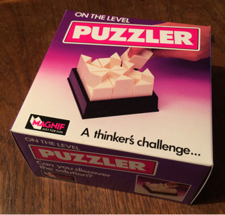 |
On the Level. Build the city block with levels.
|
|
|
|
On the Level |
|
Another day Harry Nelson noticed
one wonderful feature of the MacMahon 24-tile puzzle
set: It contains exactly nine tiles colored with three
different colors each. Hence the question: Is that
possible to create a 3x3 square of this subset so that
all the tiles touch each other with the same colors?
It has turned out that it is possible to do two
different ways, symmetric and asymmetric, and yet
another great puzzle was created! Scott Nelson was
actively involved with this puzzle, and his patent
includes it as well. In its final design each of the
three colors has got its own level, so the puzzle
looks like a city block with buildings of several
levels. And hence its name. The puzzle is
manufactured by
Magnif. |
|
|
|
|
 |
Gravity Well. Disassemble and then reassemble the shape.
|
|
|
|
Gravity Well |
|
It is a nice (though difficult)
take-apart puzzle. Your goal is to disassemble the
whole shape into three rings and a core, and then to
reassemble the shape. Manufactured and sold by
Bits And Pieces. |
|
|
|
|
 |
Cast Spiral. Disassemble the shape into five pieces and then get
them together.
|
|
|
|
Cast Spiral |
|
This puzzle is based on Ken
Walker's innovative 4-piece Jig-saw Puzzle. Harry
Nelson suggested to develop an advanced version of
Ken’s puzzle with five pieces. This version is
manufactured by
Hanayama Toys Co., Ltd. since 2003. |
|
|
|
|
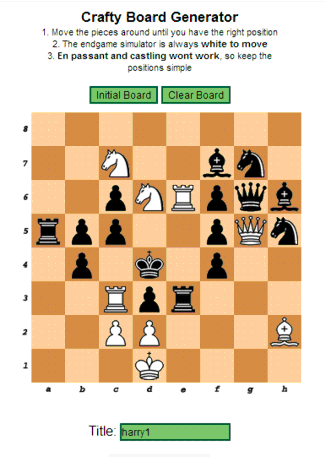 |
Don’t Fence Me In. White to move and win.
|
|
|
|
Don’t Fence Me In |
|
This is a unique and definitely
one of the hardest chess puzzle ever – it took Harry
Nelson ten years to create it! White to move and win.
Sounds quite simple, but just give it a try! The
puzzle was compiled in
Crafty Board Generator and
published in
George Koltanowski's famous Daily Chess
Column in San Francisco Chronicle. |
|
|
|
|
 |
Stormy Seas. Navigate your red boat to home dock.
|
|
|
|
Stormy Seas |
|
by Harry Nelson and Hiroshi
Yamamoto |
|
Nelson and Yamamoto have been
working on different puzzle projects for two decades.
The object of this nice puzzle from their creative
workshop is to navigate your red boat through the
channels and back to home dock. Released by Binary
Arts Corp. (now
ThinkFun, Inc.) in 1997. |
|
|
|
|
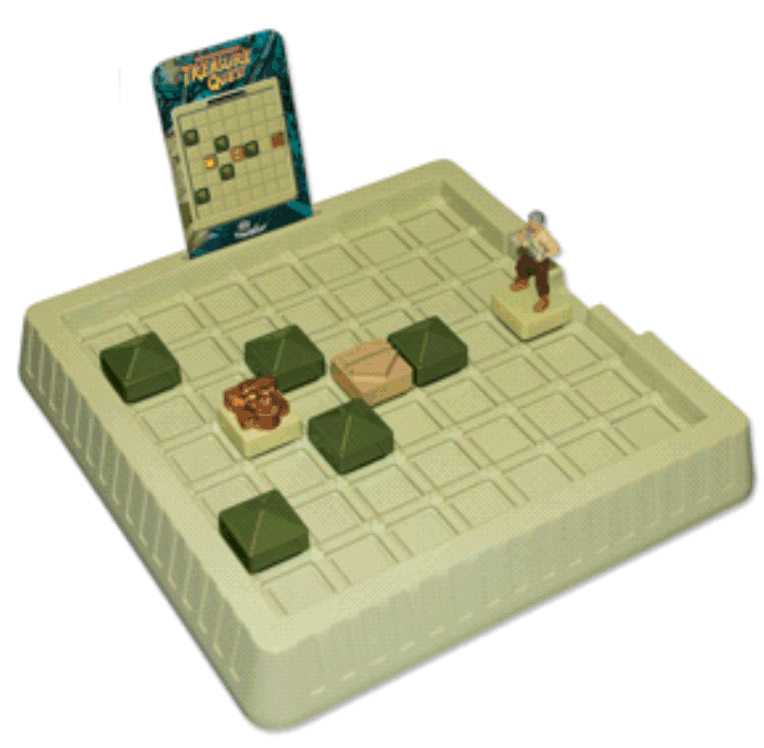 |
Treasure Quest. Find a hidden treasure.
|
|
|
|
Treasure Quest |
|
This puzzle is based on Sokoban or
Japanese Warehouseman-style online puzzles. It comprises
a board with special pieces and a set of challenges on
cards. The puzzle was designed by Harry Nelson with the
encouragement of
Nob Yoshigahara. Challenges by
Serhiy Grabarchuk Jr., Hiroshi Yamamoto, and the
game designer. Special thanks to Serhiy Grabarchuk Jr.’s
testing group including
Peter Grabarchuk. Manufactured by
ThinkFun, Inc. |
|
|
|
|
 |
Harry’s Nails. Balance different sets of nails on one another.
|
|
|
|
Harry’s Nails |
|
This puzzle was presented at the
21st International Puzzle Party (IPP21) in Tokyo,
August 2001. The puzzle idea by Harry Nelson with nail
modifications by Rick Irby. There are five puzzles.
The object is to balance increasing numbers of the
nails on one another in a free-standing structure.
When a solution is reached, only one end of a nail
may be in contact with the table surface. Cloth is used to
protect the table from falling nails. |
|
|
|
|

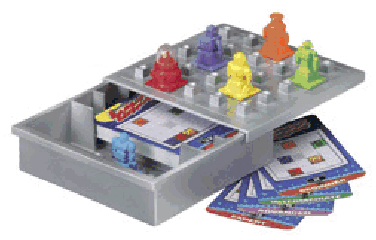 |
Lunar Lockout. Maneuver the red spacepod to the center of the
grid.
|
|
|
|
Lunar Lockout |
|
by Hiroshi Yamamoto et al. |
|
This puzzle was developed by
Hiroshi Yamamoto and further refined by
Nob Yoshigahara. Harry Nelson along with Goro Tanaka and
Mine Uematsu (the NOBrain Corps), developed the rich
set of challenges for this unusual puzzle. The object
is to maneuver your red Spacepod Xanadu, assisted by
the Helper-Bots, to the center of the Mothership's
Landing Grid. Manufactured by Binary Arts Corp. (now
ThinkFun, Inc.). |
|
|
|
|
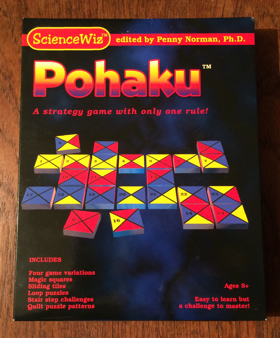 |
Pohaku. A set of puzzles and games with 24 colored tiles.
|
|
|
|
Pohaku |
|
Harry Nelson has developed this
unique set of strategy games and puzzles playing with
the MacMahon 24-tile puzzle set. He has extended its
challenges and created an innovative gameplay. Pohaku
contains a book with more than two dozen different
puzzles – including puzzle patterns, sliding tiles,
and magic squares – and four game variations for two
and more players. Manufactured by
Norman & Globus, Inc. in their ScienceWiz line. |
|
|
|
|
 |
Cool Circuits. Create different closed circuits with eight
pieces.
|
|
|
|
Cool Circuits |
|
by Harry Nelson and Hiroshi
Yamamoto |
|
This is another puzzle from
Nelson-Yamamoto’s creative team. The puzzle comprises
a light up board, 8 fluorescent, 3-D puzzle pieces,
and 40 cards with different challenges ranging from
student to expert. The object for each challenge is to
create a closed circuit. Once
you do that, the board will light up! Manufactured by
Norman & Globus, Inc. in their ScienceWiz line.
Puzzle of the Year for 2013 in
GAMES Magazine. |
|
|
|
|
|
|
|
|
|
|
|
|
| |
